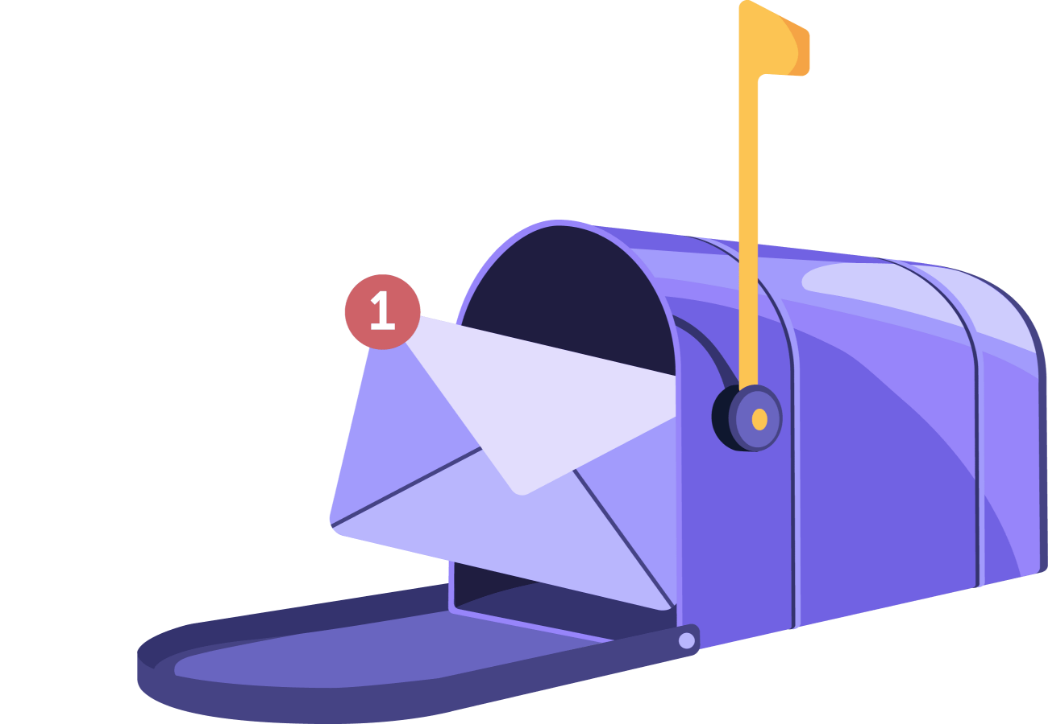Sure, content marketing and drip campaigns are great ways to nurture potential B2B buyers.
But how do you reel them in?
With so much industry competition, B2B SaaS lead generation isn’t a walk in the park—your brand has to lure in leads and convince them to connect.
That’s why B2B SaaS companies need to be more creative than ever.
More than educating your audience, you need to think about how to connect with them in an individual way.
Below are 11 strategies to capture SaaS B2B leads to attract the right prospects for your company. But before we jump right to it, let’s briefly talk about what makes leadgen for SaaS different from any other industries.
How Is B2B SaaS Lead Generation Different? What to Consider
Cold calling is dead. With a 2% success rate (according to ViB’s report, Benchmarked), it’s clear these traditional B2B lead generation strategies aren’t cutting it.
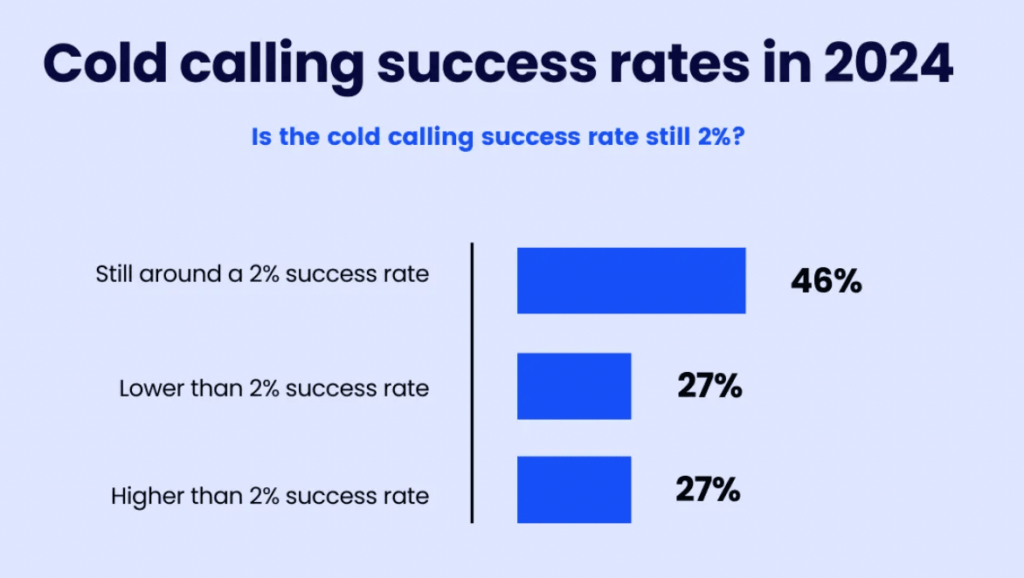
Source: vib.tech
B2B SaaS also works differently than other B2B companies.
For example, traditional B2B businesses often involve physical products or services. In this case, buyers might need in-person touchpoints to experience them.
But SaaS is entirely online-based.
This changes the nature of the buyer’s journey since leads can instantly demo the product from wherever they are.
Costly business trips to trial enterprise products in stuffy conference rooms are no longer necessary. Buyers can try your SaaS products from the comfort of their own office.
Where traditional B2B companies concentrate on building meaningful relationships above everything else, SaaS buyers want to learn. Think how-to content, use cases, and case studies. Relationships are also very important, but they aren’t everything.
And when it comes to converting those leads, the onboarding process is what plays the main role – most importantly, it should be easy and straightforward.
While for larger customers SaaS companies usually have dedicated customer success managers, the smaller ones are left with in-app messages that provide more information on the features offered and assist them in their decision-making process. A good automated in-app onboarding experience can help convert trial sign-ups into customers.
SaaS businesses often rely on self-service models. Many B2B customers onboard and purchase without ever speaking to a sales team.
But for this to work, your SaaS marketing in general and lead generation strategy in particular must focus on high-quality content that attracts prospects and encourages initial engagement. Incorporating hyper-personalized automation and nurturing can enhance user experience, as it provides relevant information and helps guide potential buyers toward making the right decision.
Your SaaS platform can also take advantage of in-app lead generation opportunities. For instance, you can:
- Offer free trials and freemium models to net new users
- Upsell feature upgrades once they’re locked in
- Generate leads from within the product itself
11 Clever B2B SaaS Lead Generation Tactics to Grow Your Brand
Good lead generation doesn’t add random people to the list. Effective strategies target your ideal customer profile so you can end up with more sales-qualified leads. This helps you focus your sales efforts on the potential clients most likely to convert.
Here are some of the best ways to capture B2B SaaS leads.
- Develop Free Online Tools
- Offer a Free Trial or a Freemium Plan
- Create a Dual-Facing Referral Program
- Harness Dark Social Channels
- Leverage API Marketplace
- Set Up AI-Powered Chatbots
- Encourage User-Generated Feature Requests
- Establish Presence in Online Communities
- Create Hyper-localized SEO Landing Pages
- Send Hyper-Personalized Product Usage Emails
- Encourage User-Generated Content from Influential Users
1. Develop Free Online Tools
Identify small pain points in your industry and develop handy online tools, such as calculators or converters, to help with them. Offer these tools in return for contact information.
For example, a tax SaaS brand might offer a free tax deduction calculator gated behind a lead capture form. These tools help showcase what your brand can do as an authority in your industry, building credibility while gathering leads.
Here’s another example: Moz, an SEO company, offers online tools to help businesses run successful SEO campaigns, monitor site parameters, and choose the right keywords to get qualified website traffic.
Its Keyword Explorer is an SEO keyword research tool equipped with more than 1.25 billion traffic-driving keywords that helps you to:
- Generate keywords relevant for your business.
- Organize, track, and compare different keywords.
- Explore the keywords for which your competitors’ sites are ranking.
- Check the keyword’s ranking difficulty score.
When you enter a keyword (for example, “lead generation”) in Moz Keyword Explorer tool, you can select the country of the audience you want to target.
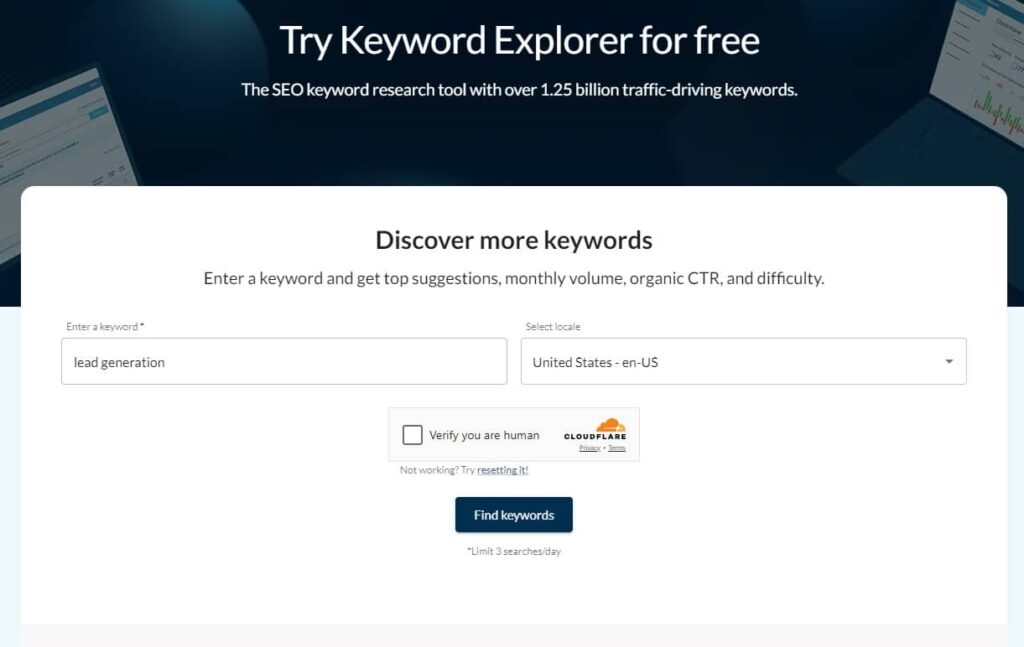
Source: Screenshot of moz.com.
Then, you get the keyword’s monthly volume, organic CTR, and difficulty score. You also get keyword suggestions based on your keyword, as seen below:

Source: Screenshot of moz.com.
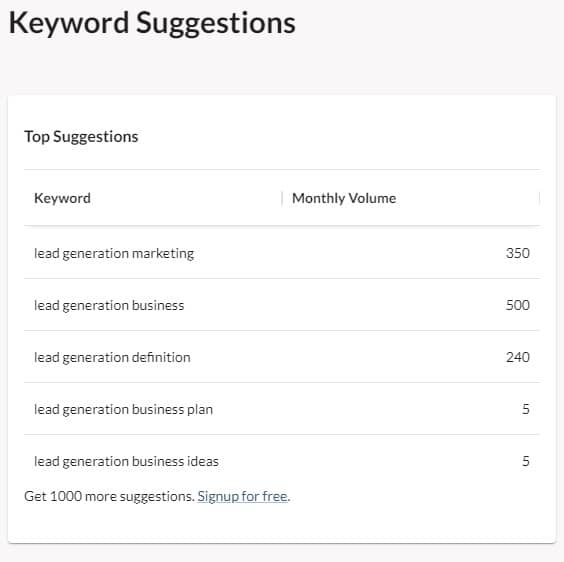
Source: Screenshot of moz.com.
To view full results, you’ll need to sign up and you’ll have access to questions people ask on search engines and SERP analysis for your keyword:
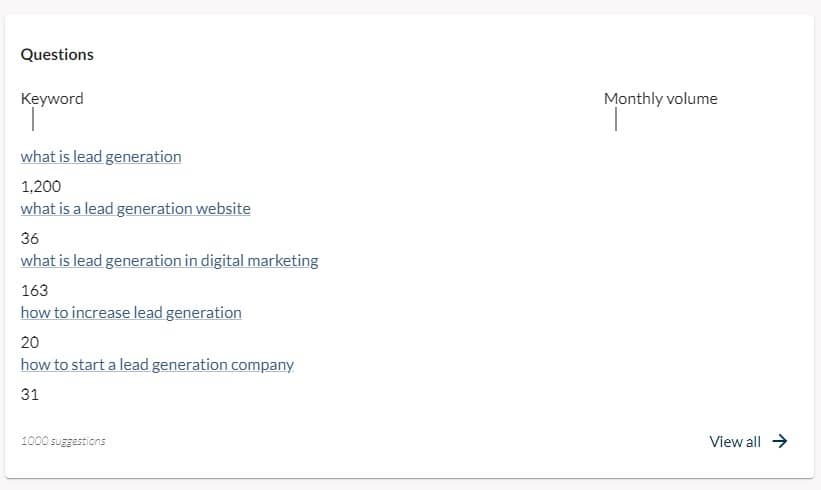
Source: Screenshot of moz.com.

Source: Screenshot of moz.com.
This way, Moz offers you a really helpful tool that becomes even more helpful once you sign up. Voila! You just became a lead!
2. Offer a Free Trial or a Freemium Plan
Offer a free plan or trial that’s worth it. Don’t bother offering a very limited version—it won’t sell you to users if they feel forced to upgrade.
Instead, offer an excellent free product with an easy upgrade path that provides significantly more value to the right audience.
Calendly, for instance, offers a forever-free plan for one user.
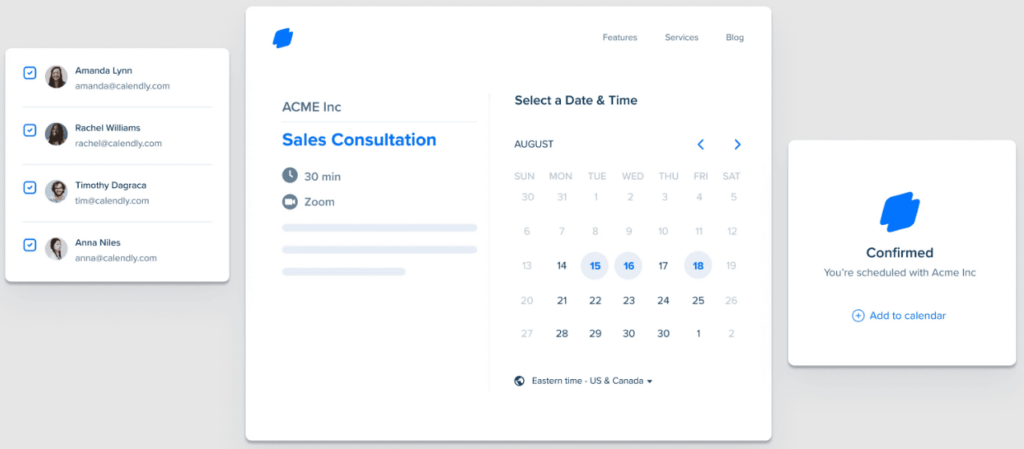
Source: Calendly
The freemium model provides most of the same functionality as the paid plans. However, you must pay if you want more than one user to have synchronized calendars or more than one link per user.
This helps companies test the product before scaling it for their whole team. Also, it keeps Calendly top-of-mind for a lot of people who already use it for their individual needs. When their team finds itself in a situation where they could use such a product, of course, they naturally turn to Calendly – they already know and like it.
Editor’s note: Or take our product—Mouseflow. We also have a free forever plan that perfectly covers behavior analytics needs for very small sites. Larger sites run out of session credits pretty quickly, so it makes sense for them to upgrade to track more sessions.
We do it slightly differently, though—you can sign up for a free trial to experience the app without limitations, but then it will turn into a free forever plan if you choose this option and don’t go with any of the paid plans.
Feel like a free trial or plan isn’t an option for your product?
Here are factors that indicate why a free trial or freemium may not be suitable for your SaaS company:
- Complex products: Your product involves a lot of training or onboarding processes. It might also require third-party integration for full use. A free trial might not be ideal in this case as users can’t experience the product’s full features and capabilities.
- Not enough results: A free trial doesn’t work if it takes a while to achieve results with a product, and a free plan won’t work if it doesn’t include everything the user needs to achieve at least some results.
- No space for tiering: If your product is binary in the sense that it either does the job or doesn’t and there’s no adjustments to make, coming up with a free plan may result in offering too much and cannibalizing sales.
If a free trial isn’t the right approach to turn users into paying customers for your products, you can consider these alternatives to enhance engagement and build trust:
- Create an explainer video or a guided demo: This is an effective way to explain how an SaaS product or service works and the benefits it provides. A visual representation helps potential customers understand your product’s real value without the need of a free trial. Make sure to include testimonials or case studies in the video to enhance credibility. By the way, having a free trial shouldn’t prevent you from doing so. Check out Mouseflow’s guided demo, for example. Mouseflow has a free trial but the demo is still helpful.
- Offer a money-back guarantee: It assures your customers that they can get their money back if they aren’t satisfied with the purchased product or service. This shows that your brand cares about its customers which can boost conversions.
- Provide a no-obligation contract: If the customer isn’t satisfied with the product or service, they are free to cancel at any time without long-term commitment. This can help boost conversions as users are more in control of their decision.
3. Create a Dual-Facing Referral Program
Leverage your existing customer base.
Incentivize your loyal customers to refer others and prospective customers to sign up. Offer a referral program that rewards both parties with discounts or extra services.
Dropbox is one example of a successful dual-facing referral program.
It implemented a system where both the referrer and the referred person get additional free storage when a new user creates an account via the referral link. This encourages existing users to share Dropbox with their friends and new users to sign up, since both benefit from extra free storage.
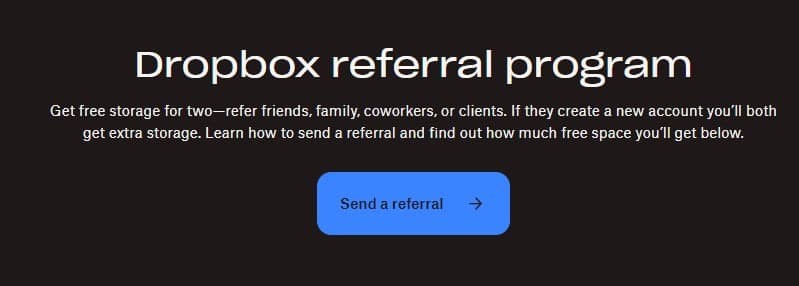
Screenshot of dropbox.com
To create a referral program, consider offering discounts when someone makes a purchase or credits that users can spend on upgrades.
4. Harness Dark Social Channels
Dark social may sound ominous, but it isn’t.
It refers to the idea of sharing content and information via private channels, like messaging apps. It’s “dark” because it’s hard to measure its effectiveness with traditional web analytics tools.
However, these channels are seriously overlooked by B2B marketers who don’t realize how effective they are.
According to Demand Conversion’s 2023 Report on the State of B2B SaaS Demand Generation, buyers aren’t going to as many networking events as they used to. Instead, they’re looking for product recommendations from their peers on social media platforms like LinkedIn and Reddit.
At the same time, buyers are looking for the specifics on how a vendor will solve their particular problems.
This creates the perfect opportunity for B2B SaaS marketers.
On social media, you can respond to people’s calls for recommendations by sending direct messages with highly specific case studies and use-case information.
Even if you can’t see every conversation happening in dark social media channels, you can still engage proactively with your target audience. You can monitor groups, messaging platforms, and forums where posts and discussions about your product or industry take place.
If a potential lead asks for recommendations or more information, you can reach out to them with a personalized reply. Make sure to include case studies related to their needs.
5. Leverage API Marketplaces
API management is integral to growing businesses. APIs help them connect tools to streamline their workflows.
The industries that can benefit from API management include:
- SaaS: Your SaaS brand can connect with tools like CRM systems, analytics software, and marketing automation platforms to help improve efficiency.
- Finance: Financial institutions can rely on APIs to connect with third-party services. This helps provide users with smooth transactions and improved data analysis.
- Manufacturing: This industry can benefit from APIs to connect with enterprise resource planning (ERP) systems, production processes, and equipment maintenance.
- Healthcare: This industry can benefit from APIs to connect with electronic health records, allowing providers to manage patient information more effectively.
So, if your SaaS is catering to one of these industries, listing your API on popular marketplaces increases your visibility and positions you as an attractive tool for facilitating connectivity.
You can try marketplaces like RapidAPI or GitHub.
Don’t just list it, though.
Support the listing with clear documentation and use cases.
Here’s an example: Twilio is a company that uses API marketplaces to drive lead generation.
It is a cloud communications platform that lists its APIs on RapidAPI and GitHub to make it easier for developers to connect its messaging, video, and voice services to their applications.
Considering that it provides comprehensive documentation and use cases, Twilio demonstrates how a company’s communication workflows can benefit from its APIs. This can help attract enterprises of different sizes who may be looking to scale their services.
6. Set Up AI-Powered Chatbots
AI-driven chatbots can offer real-time support to prospects exploring your website and social channels.
But you can also use them to help identify high-quality leads. These powerful tools engage visitors, answer common questions, and guide them through actions.
This process helps the chatbot identify high-intent prospects.
Make sure to program the chatbot to collect contact details for follow-up marketing.
7. Encourage User-Generated Feature Requests
Put out a public call inviting users to submit feature requests. Include a lead capture form during the submission process.
This helps you gain insight into what users really want. It also shows exactly who’s using it and how you could convert them into buyers or upsell them.
8. Establish Presence in Online Communities
As Demand Conversion’s report explains,
“The adoption of Slack has increased since COVID, and buyers are increasingly turning to these types of collaborative channels for purchase advice.”
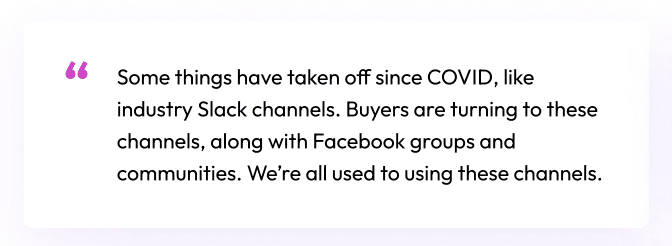
Source: State of B2B SaaS Demand Generation Report by Demand Conversion
Despite this, B2B marketers aren’t using these “word of mouth” communities to target customers appropriately.
Consider joining online communities like Reddit, Slack, Discord, and Facebook groups. Find communities and channels that are relevant to your organization and engage with the users.
Answer questions, contribute to discussions, share feature updates, and link to valuable content. You could also offer Ask Me Anything (AMA) question-and-answer sessions or start your own threads and communities.
Just remember, these communities don’t like direct selling.
Your approach should be informative and educational, not promotional. For instance, answer a question with helpful advice or share a story about how you overcame a relevant challenge someone brought up.
9. Create Hyper-localized SEO Landing Pages
B2B marketers still agree that search engine optimization (SEO) is one of the most effective lead generation tactics.
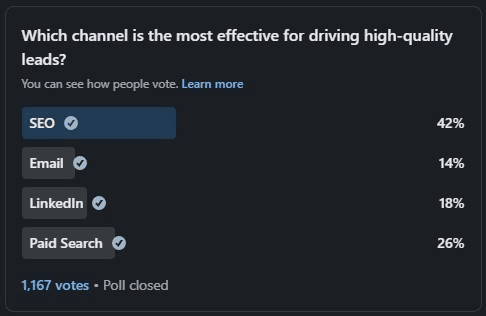
Source: LinkedIn
But, marketing a product without a location can make competing for some top keywords difficult.
Instead, create multiple hyper-localized landing pages that appeal to your target audience and include their location or specialism.
This helps you target smaller, specific groups more effectively by focusing on niche keywords.
For example, imagine you have a legaltech company with many aligned prospects in Ohio and Vermont.
It’s tough to compete for the term “e-discovery tool.” Instead, you might create a few pages targeting both locations with terms like “e-discovery tool for Ohio LLC” or “e-discovery tool for family lawyers in Vermont.”
10. Send Hyper-Personalized Product Usage Emails
Be smart with your email marketing efforts. Concentrate on your free trial or freemium plan users since these are your qualified leads. You know they need and use your product already.
Convert your free trial users into buyers with hyper-personalized recommendations.
Analyze their user data to understand how they’re using your tool. Segment different types of users based on the features they use most. Then, send email sequences with personalized tips, promotions, and upgrade suggestions based on this behavior.
You can identify promising potential customers by tracking how they interact with these email campaigns.
11. Encourage User-Generated Content from Influential Users
Motivate and incentivize your satisfied customers to create and share content about your products.
Link users to online review sites. Ask for customer testimonials and positive reviews in return for discounts and access to extra features.
To boost your credibility, incentivize influential users to create review videos outlining their positive experiences with your product. Target the influencers in the online communities you join, not just those on social media.
In these cases, you can offer affiliate marketing deals. Influencers take a percentage of the sale in return for promoting your product. But be careful, affiliation should be disclosed openly, otherwise prospects will become suspicious.
This helps you reach a much wider audience with minimal effort.
Taking B2B SaaS Lead Generation to the Next Level
While gated content and newsletter pop-ups still work and can help you get some leads, they’re not the most creative way to net prospective clients.
B2B buyers now turn to their peers and communities to understand which products offer the best user experience. In response, your B2B SaaS lead generation campaigns must offer a more personable and personalized approach.
However, for successful lead generation campaigns, you need to understand your ideal customers and their wants.
Don’t simply guess.
Leverage Mouseflow and watch your customers use your product to gain valuable insights into their wants and needs so you can build better user personas and improve your lead-generation process. Try it for free now.
Here’s to your success!


